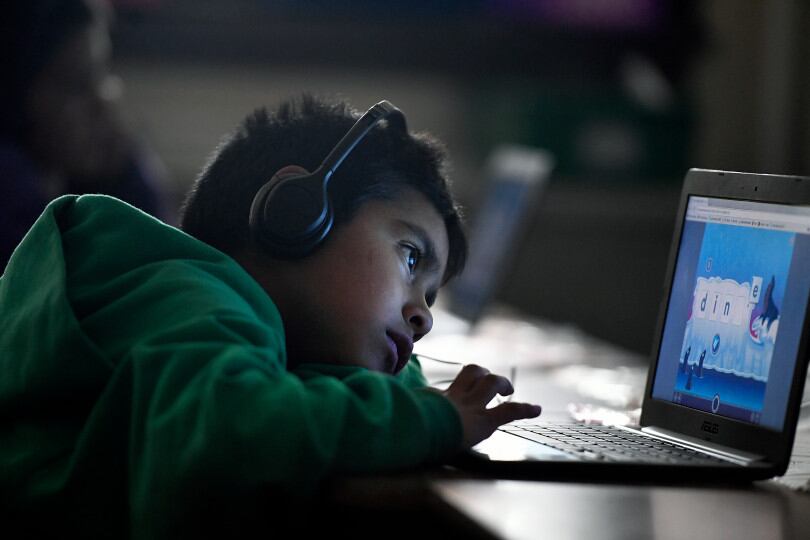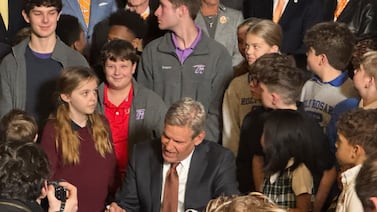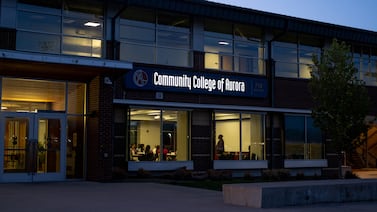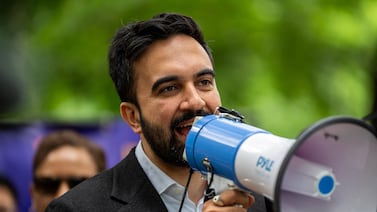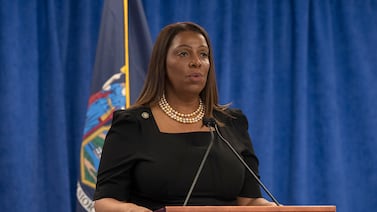Denver students who choose a 100% virtual learning option this fall will receive more real-time instruction than they may have gotten in the spring, according to new information released Tuesday. But students might not be taught by teachers at their school.
The Denver school district clarified that it “will make every effort” to match students who choose the virtual option with teachers from their school. But if the numbers don’t allow for that, students may receive virtual instruction from a teacher at a different school.
The information, posted on Denver Public Schools’ website Tuesday, provides more insight into how the district’s 100% virtual option will work. The district is aiming to provide students more consistency and uniformity than existed in the spring, when the coronavirus forced schools to unexpectedly and quickly shift to remote learning.
Superintendent Susana Cordova said she hopes that offering a “more robust” virtual learning program will also free parents from monitoring lessons.
“We really want to emphasize the importance of more live interaction, so that hopefully students will be able to log on in their live session with their teacher, giving parents who are working … the opportunity to focus on their own work, as well,” Cordova said Monday during a live question-and-answer session on Facebook.
The district will offer two choices to families this fall: an all-virtual learning option and an in-person option. The in-person option will actually start remotely. Coronavirus cases are climbing in Colorado, and district leaders decided last week that it was safer for students to start online and then transition to in-person learning if conditions improve.
Families must choose an option when they register their children before Aug. 24, the first day of school. That choice is binding for the fall semester, district officials said, though school principals can make exceptions. A previous survey found that most families preferred in-person learning but nearly a quarter of families preferred an online option, a portion that may increase if coronavirus cases continue to rise.
Students enrolled in the in-person option will learn remotely for at least two weeks. The earliest school buildings would open would be Sept. 8, district officials said.
But students enrolled in the virtual option will stay virtual for the entire fall semester. After that, district officials said families can switch to the in-person option if they want — or vice versa. Students who choose the virtual option will not lose their seat at their school.
The district said that virtual education will likely be taught by teachers who requested that assignment. Some teachers asked to teach virtually because they have underlying health conditions that would put them at greater risk of COVID complications, or because they live with a family member who does.
Most virtual classes will be held “live,” meaning students will log on at a certain time to watch their teacher deliver a lesson. That’s a change from the spring, when the district emphasized that teachers should prerecord their lessons so that students — and parents juggling work and child care — could watch the lessons whenever it was most convenient.
But district officials said that as time went on, they learned the importance of teachers being face-to-face with their students, if only virtually.
Chris Christoff, who teaches kindergarten and first grade, said that when learning first shifted online in March, he spent his entire spring break making a website for his class with prerecorded videos of him reading books aloud and explaining math problems.
But by May, Christoff said he was spending up to six hours a day in front of his computer with students. Sometimes he’d just be watching quietly while they worked. That kind of support worked better for most of his students than the prerecorded videos, he said.
Another improvement, district officials said, is that the district has narrowed to two the number of online learning platforms that students and teachers will use: SeeSaw for kindergarten through fifth grade and Schoology for grades 6 through 12. The aim is to cut down on confusion and provide consistency for students, parents, and teachers, Cordova said.
The district will also have consistent grading and attendance policies for the virtual program. Elementary school teachers will be expected to take attendance every day, while middle and high school teachers will be expected to take attendance every class period, according to a new 37-page remote learning plan released by the district.
A student will be counted as present if he or she attends a live lesson or online meeting with their teacher, completes an assignment, or emails, texts, or calls their teacher, the plan says.
Students attending school virtually will be graded the same as students attending in person, the plan says. Teachers will not give F grades to students in middle and high school. Instead, students will receive an incomplete for the course, which won’t impact their GPA.
The virtual option will use district-provided curriculum, the plan says. That may differ from the curriculum at a student’s school since the district allows schools to choose their own.
Students learning English as a second language who choose the 100% virtual option will continue to receive specialized services remotely, the plan says.
For students with disabilities, the plan says the district will “work collaboratively with families to determine needs and services in the remote learning environment.” Some services, such as occupational or physical therapy, proved difficult to deliver online last spring.
Changing public health conditions, such as a surge in coronavirus cases, will be less disruptive for the virtual students. Students attending school in person, however, may have to switch to remote learning if a classmate or teacher tests positive for COVID. That remote learning would be different than the districtwide 100% virtual option.
All students choosing to go to classrooms in person may also have to switch to a hybrid of remote and in-person learning if officials deem it safer, the plan says.
If that happens, students would attend school in person on an “AA/BB” schedule. One group would attend in person on two consecutive A days, while another group would attend on two consecutive B days.
The fifth day of the week would be reserved for students with disabilities, those in the early stages of learning English, and any other students who need extra help.
Students would learn remotely on the days they’re not in school in person. Schools will assign siblings to the same A or B group to make it easier for families, the plan says.

